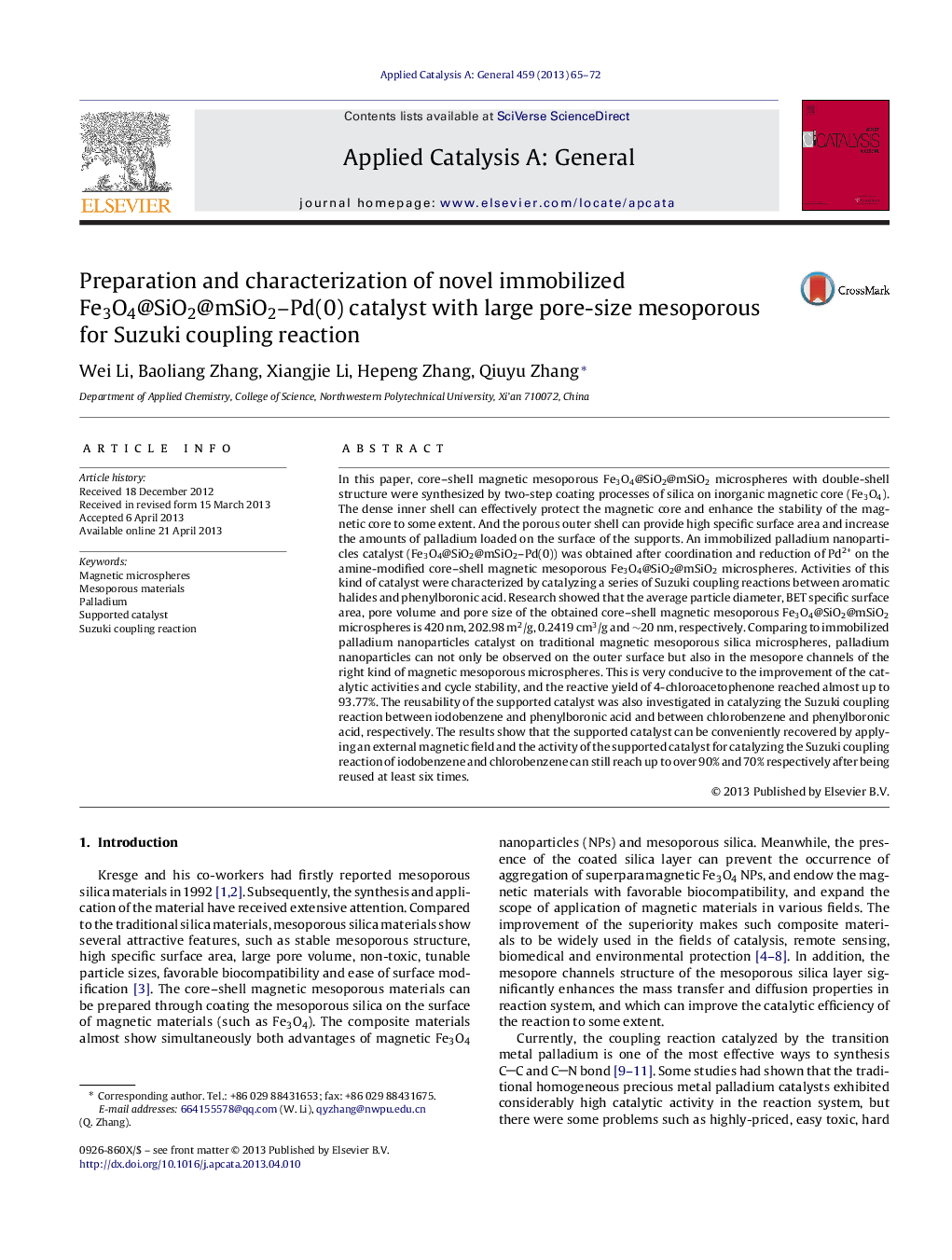| کد مقاله | کد نشریه | سال انتشار | مقاله انگلیسی | نسخه تمام متن |
|---|---|---|---|---|
| 40331 | 45850 | 2013 | 8 صفحه PDF | دانلود رایگان |

• A novel core–shell magnetic mesoporous Fe3O4@SiO2@mSiO2 microspheres with large pore-size mesoporous had been successfully prepared.
• The immobilized Fe3O4@SiO2@mSiO2–Pd(0) catalyst was successfully obtained.
• This novel catalyst can be conveniently recovered by applying a permanent magnet externally.
• The morphology of Fe3O4@SiO2@mSiO2–Pd(0) which had been used several times do not change significantly.
In this paper, core–shell magnetic mesoporous Fe3O4@SiO2@mSiO2 microspheres with double-shell structure were synthesized by two-step coating processes of silica on inorganic magnetic core (Fe3O4). The dense inner shell can effectively protect the magnetic core and enhance the stability of the magnetic core to some extent. And the porous outer shell can provide high specific surface area and increase the amounts of palladium loaded on the surface of the supports. An immobilized palladium nanoparticles catalyst (Fe3O4@SiO2@mSiO2–Pd(0)) was obtained after coordination and reduction of Pd2+ on the amine-modified core–shell magnetic mesoporous Fe3O4@SiO2@mSiO2 microspheres. Activities of this kind of catalyst were characterized by catalyzing a series of Suzuki coupling reactions between aromatic halides and phenylboronic acid. Research showed that the average particle diameter, BET specific surface area, pore volume and pore size of the obtained core–shell magnetic mesoporous Fe3O4@SiO2@mSiO2 microspheres is 420 nm, 202.98 m2/g, 0.2419 cm3/g and ~20 nm, respectively. Comparing to immobilized palladium nanoparticles catalyst on traditional magnetic mesoporous silica microspheres, palladium nanoparticles can not only be observed on the outer surface but also in the mesopore channels of the right kind of magnetic mesoporous microspheres. This is very conducive to the improvement of the catalytic activities and cycle stability, and the reactive yield of 4-chloroacetophenone reached almost up to 93.77%. The reusability of the supported catalyst was also investigated in catalyzing the Suzuki coupling reaction between iodobenzene and phenylboronic acid and between chlorobenzene and phenylboronic acid, respectively. The results show that the supported catalyst can be conveniently recovered by applying an external magnetic field and the activity of the supported catalyst for catalyzing the Suzuki coupling reaction of iodobenzene and chlorobenzene can still reach up to over 90% and 70% respectively after being reused at least six times.
Figure optionsDownload high-quality image (180 K)Download as PowerPoint slide
Journal: Applied Catalysis A: General - Volume 459, 24 May 2013, Pages 65–72